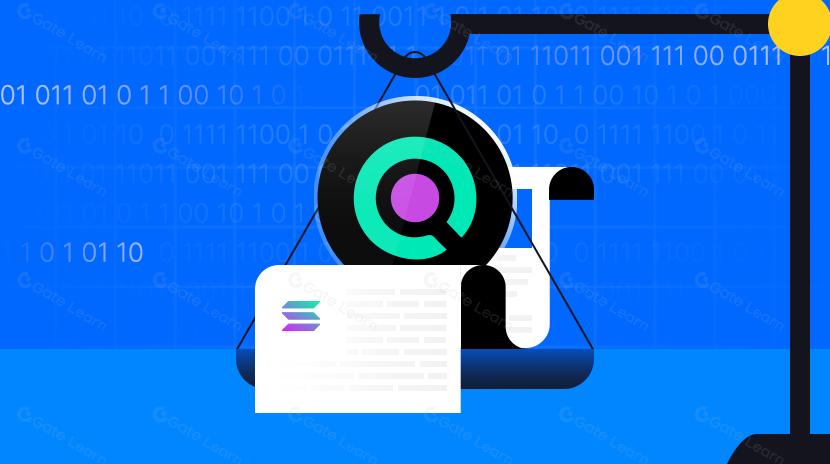Manus: Будущее ИИ-агентов или просто маркетинговый трюк?
Сегодня волнение прокатилось по сообществу искусственного интеллекта. Продукт под названием Manus, сопровождаемый полностью англоязычным промо-роликом и механизмом ограниченного доступа, быстро привлек внимание широкой аудитории. Разработанный китайской командой, этот искусственный интеллект официально называется «первым в мире универсальным агентом», как будто за одну ночь OpenAI и Anthropic’s Operators устарели. После запуска Manus вызвал взрывное распространение в узком кругу, напоминая явление DeepSeek. Но сможет ли Manus по-настоящему стать следующим DeepSeek? Давайте глубже взглянем.

Что такое Manus в точности?
Согласно промо-видео и официальному веб-сайту Manus, это искусственный интеллект, способный «обрабатывать различные сложные и динамичные задачи, обладающий независимым мышлением и системными планировочными способностями, гибко использующий инструменты в виртуальных средах и напрямую предоставляющий полные результаты». Такие описания не редки среди сегодняшних продуктов искусственного интеллекта, поскольку многие решения по ИИ маркетингово позиционируют себя аналогично. Manus еще не доступен публично и может быть получен только с помощью пригласительного кода, причем его выпуск полностью зависит от демонстрационных видео.
В видеодемонстрациях Manus демонстрирует несколько конкретных сценариев применения: например, загрузку сжатого файла, содержащего несколько резюме, автоматическое извлечение, анализ и предоставление рекомендаций на основе подсказок; организацию информации о недвижимости и ценах в соответствии с потребностями пользователя; и создание аналитических отчетов о ценах на акции NVIDIA и Tesla. Подобные функции уже были продемонстрированы OpenAI Operator, Phone Use от Zhipu AI, Google Gemini и другими продуктами искусственного интеллекта.
С технической точки зрения Manus не предоставил подробного технического отчета. Некоторые аналитики предполагают, что его основные возможности могут быть производными от модели Claude, усовершенствованными с техниками тонкой настройки на основе открытых моделей и выполнением задач через серию предварительно настроенных рабочих процессов. Его инновация заключается в инкапсуляции этих возможностей в облачной виртуальной среде и предоставлении услуг через асинхронную модель взаимодействия, хотя это все еще находится на некотором расстоянии от стремления отрасли к "общему искусственному интеллекту".
Проблема с "агентом общего назначения"
Manus нацелен на то, чтобы стать «общим AI агентом», что означает, что он не просто дает рекомендации или ответы, но может автономно планировать и выполнять задачи. Однако само это определение проблематично. Мощные модели, такие как Claude, уже обладают способностью обрабатывать сложные задачи и выполнять их эффективно благодаря интеграции инструментов. Поэтому функционал, который Manus утверждает, что предлагает, по сути, может быть достигнут с помощью более продвинутых агентов или крупных моделей без необходимости специально разработанной системы, подобной Manus.
Кроме того, позиционирование продукта Manus явно отличается от традиционных помощников по искусственному интеллекту. Похоже, что он интегрирует различные инструменты и агентов через "виртуальную среду" для улучшения автоматизации. Хотя такой подход снижает технический барьер для пользователей, действительно ли это делает Manus универсальным интеллектуальным агентом? В конце концов, персонализированные требования к агенту сильно различаются от человека к человеку, и способность Manus адаптироваться к различным сценариям остается открытым вопросом.
Маркетинговая стратегия: Маркетинг на основе дефицита и пиар в социальных сетях
"Вирусный успех" Manus не зависит исключительно от его технологий; его маркетинговая стратегия также является ключевым фактором. Реализуя механизм только по приглашениям, Manus создал восприятие дефицита, вызвав бурю в сообществе искусственного интеллекта. Некоторые платформы даже перепродают пригласительные коды по ценам от 999 юаней до 50 000 юаней. Этот подход маркетинга дефицита черпает вдохновение из классических стратегий эры мобильного интернета: ограниченные выпуски, интенсивная пользовательская конкуренция и пиар-рецензии, основанные на KOL. Хотя этот метод эффективно создает ажиотаж и вовлеченность, остается неясным, сможет ли он поддерживать долгосрочный рост пользователей."
Однако, когда мы смотрим на зарубежные технологические форумы и социальные сети, дискуссии о Manus кажутся относительно спокойными. Это говорит о том, что, несмотря на то, что Manus пользуется популярностью в Китае, он, возможно, не нашел отклика на международном рынке. Примечательно, что запуск Manus, похоже, чрезмерно полагается на эмоциональный маркетинг, пытаясь использовать настроение «DeepSeek» для быстрого привлечения внимания. Тем не менее, это также может указывать на то, что его популярность недолговечна, и ему не хватает долгосрочной конкурентоспособности.
Значение продукта Manus и его ограничения
С точки зрения дизайна продукта, Manus можно рассматривать как инкапсуляцию и оптимизацию существующих продуктов искусственного интеллекта, похожих на курсор. Интегрируя несколько небольших моделей и агентов, он упрощает рабочие процессы пользователей, облегчая выполнение сложных задач тем, кто не является специалистом в области техники. Тем не менее, такой подход не является полностью инновационным, поскольку подобные концепции дизайна уже появились в различных продуктах искусственного интеллекта, таких как OpenDevin.
Преимущество Manus заключается в его способности упаковывать эти сложные технологии в более удобный для пользователей продукт, позволяя обычным пользователям использовать ИИ для сложных задач. Однако его ограничения также очевидны. Во-первых, Manus все еще полагается на заранее заданные рабочие процессы, что ограничивает его гибкость и инновации. Во-вторых, его рабочая среда относительно закрытая, функционирует только в определенном диапазоне программных инструментов, в отличие от универсальной операционной системы, поддерживающей разнообразные приложения. Следовательно, вопрос о том, может ли Manus действительно достичь своей цели быть «универсальным» агентом ИИ, остается открытым.
Будущее соревнование и развитие
Manus не одинок в области агентов. Конкуренты, такие как Coze и Dify, также стремятся создать аналогичные универсальные агенты. Что более важно, по мере продвижения технологии крупных моделей, модели, такие как Claude 3 и GPT-5, уже демонстрируют мощные возможности вызова инструментов. В будущем возможности крупных моделей могут прямо поглотить рынок продуктов на основе агентов. Способно ли Manus выделиться в этом сильно конкурентном ландшафте, остается значительным вызовом.
Более критическим фактором является способность Manus определить действительно жизнеспособную рыночную позицию. Его целью является стать «универсальным Агентом», но на основе его текущей формы продукта он больше похож на эффективную платформу искусственного интеллекта, разработанную для конкретных сценариев применения, а не на универсально способный искусственный интеллект. Если не удастся преодолеть этот узкий проход, его рост на рынке может быть ограничен относительно узким кругом.
Заключение
В целом, Manus - это многообещающий продукт ИИ, особенно с точки зрения пользовательского опыта и технической интеграции. Однако это не технологическая революция. Его позиционирование как "общего искусственного интеллекта" остается под вопросом, поскольку дизайн продукта сосредоточен скорее на упаковке существующих технологий, чем на революционных инновациях. Хотя его маркетинг на основе дефицита и хайп в социальных сетях вызвали ажиотаж, способен ли он поддерживать интерес пользователей зависит от его способности выработать уникальное предложение ценности на интенсивно конкурентном рынке. Если Manus сможет преодолеть свои текущие ограничения в будущем, интегрируя многоАгентное взаимодействие и более эффективные механизмы выполнения задач, у него все еще есть потенциал стать значительным игроком в области искусственного интеллекта.
Отказ от ответственности:
- Этот статья перепечатана из [Techub Новости]. Авторские права принадлежат оригинальному автору [Новости Techub]. Если у вас есть возражения по поводу этого повторного публикования, пожалуйста, свяжитесь сGate Learnкоманда и они оперативно обработают запрос в соответствии с соответствующими процедурами.
- Отказ от ответственности: Взгляды и мнения, высказанные в этой статье, являются исключительно мнением автора и не являются инвестиционными рекомендациями.
- Другие языковые версии этой статьи были переведены командой Gate Learn. Без явного упоминания Gate.com, воспроизведение, распространение или плагиат статьи перевод не допускается.
Похожие статьи

Что такое Tronscan и как вы можете использовать его в 2025 году?

Что такое индикатор кумулятивного объема дельты (CVD)? (2025)

Что такое OpenLayer? Все, что вам нужно знать о OpenLayer

Что такое Нейро? Все, что вам нужно знать о NEIROETH в 2025 году

Что такое Solscan и как его использовать? (Обновление 2025 года)


